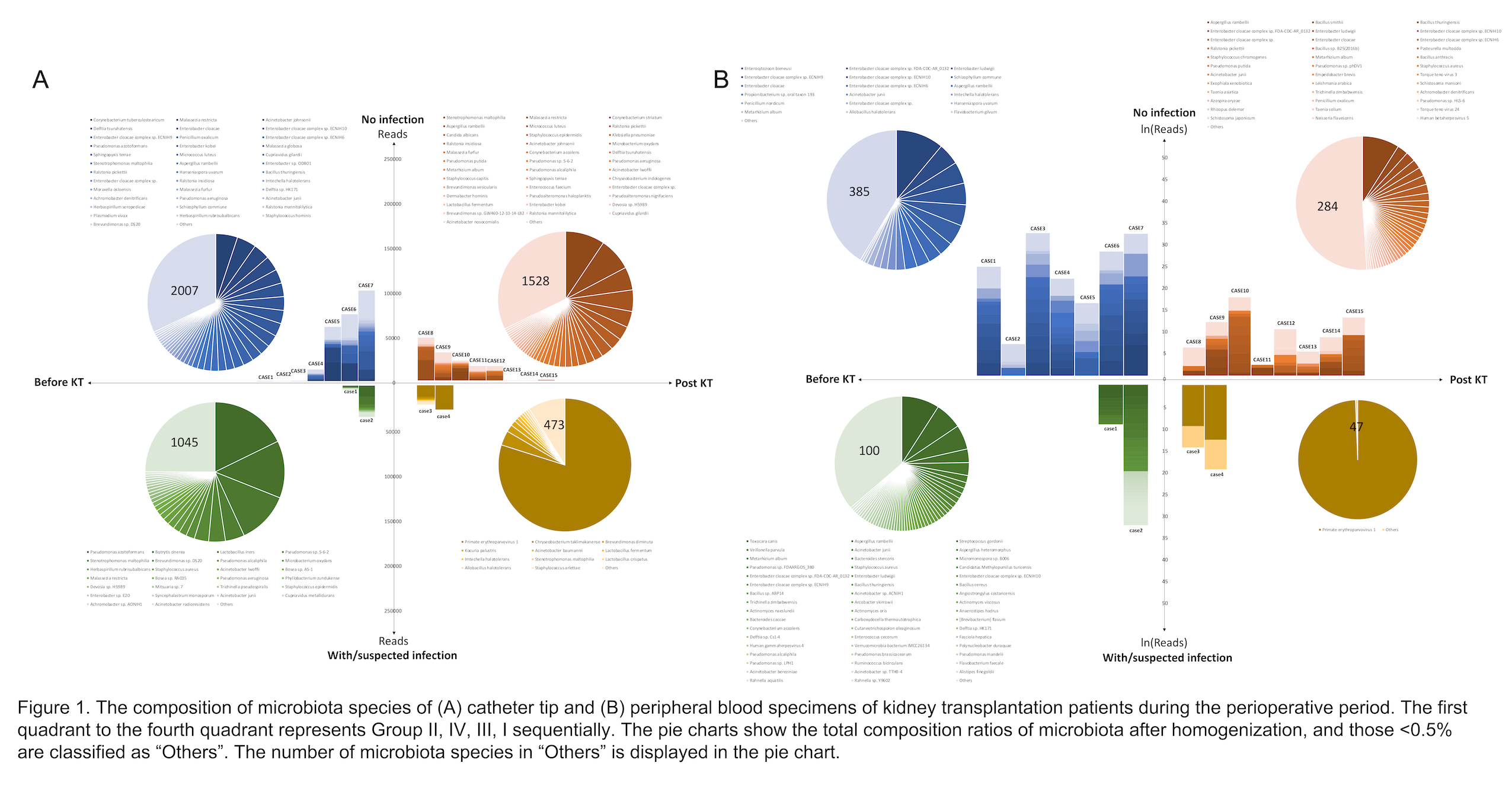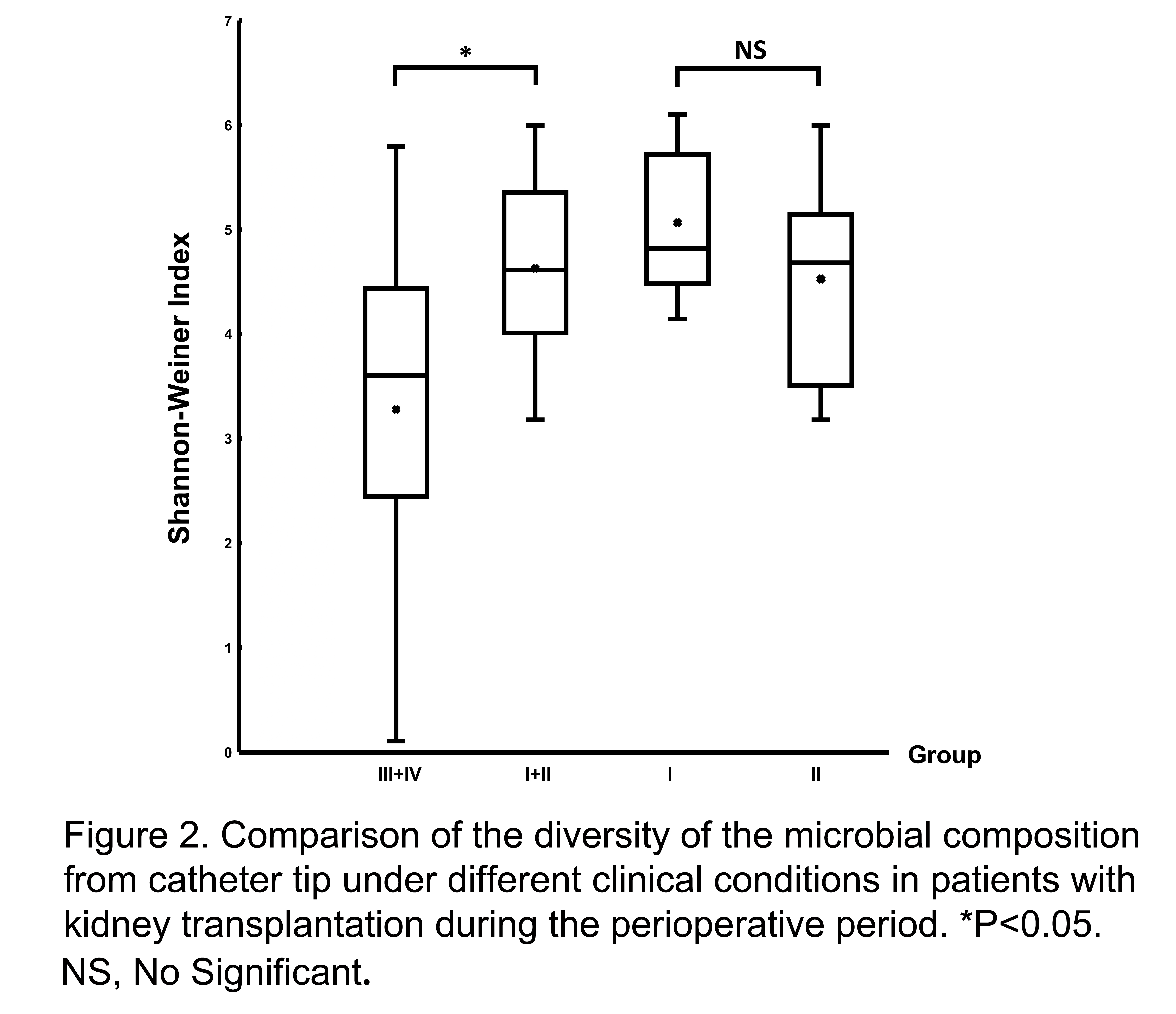Detection of Microbiota from Catheter Tip in Hemodialysis Patients During the Perioperative Period of Kidney Transplantation Based on Metagenomics: A Prospective Study
Z. Yan, Y. Wang, W. Zeng, R. Xia, W. Deng, J. Xu, Y. Miao
Department of Transplantation, Nanfang Hospital, Southern Medical University, Guangzhou, China
Meeting: 2022 American Transplant Congress
Abstract number: 975
Keywords: Infection, Kidney transplantation
Topic: Clinical Science » Infection Disease » 24 - All Infections (Excluding Kidney & Viral Hepatitis)
Session Information
Session Name: All Infections (Excluding Kidney & Viral Hepatitis) II
Session Type: Poster Abstract
Date: Sunday, June 5, 2022
Session Time: 7:00pm-8:00pm
 Presentation Time: 7:00pm-8:00pm
Presentation Time: 7:00pm-8:00pm
Location: Hynes Halls C & D
*Purpose: Catheter-related infection (CRI) is the most serious complication in dialysis patients. However, current studies are limited to routine culture or immunological examination of CRI. The lack of high-throughput research on catheter-related microbiota makes it difficult to explore the occurrence regularity of CRI. The study aimed to delineate the microbial structure and diversity landscape of catheter tip in dialysis patients during the perioperative period of KT and provide insights into the influence of predicting and avoiding the occurrence of CRI.
*Methods: Nineteen dialysis patients with internal jugular vein catheterization in the perioperative period of transplantation were enrolled and divided into four groups: no infection before KT (Group I, n=7), no infection after KT (Group II, n=8), proved infection/suspected infection before KT (Group III, n=2) and proved infection/suspected infection after KT (Group IV, n=2). The catheter tip and peripheral blood specimens were both analyzed by metagenomic next-generation sequencing.
*Results: The microbial compositions of the catheter tip and peripheral blood are shown in Fig. 1. The high diversity of microbiota reflects the stability and balance of individual microecology; while the decrease in diversity or the occurrence of dominant species indicates infection. As shown in Fig. 2, the difference between the α diversity of patients with infection (Group I and II) and without infection (Group III and IV) is significantly different, but that of Group I and II presented no statistical difference.
*Conclusions: This is the first study to investigate microbiota of catheter tip in dialysis patients during the perioperative period of KT by mNGS. The microbiota of catheter tip is in a relatively stable state, not easily influenced by KT, which could reflect hematogenous infection to some extent. Specifically, the long-term colonized microbiota of catheter tip does not act as the source of infection in all CRIs, while the detected dominant species can be actual hematogenous pathogens which have destroyed the stability of the normal catheter tip microbiota.
To cite this abstract in AMA style:
Yan Z, Wang Y, Zeng W, Xia R, Deng W, Xu J, Miao Y. Detection of Microbiota from Catheter Tip in Hemodialysis Patients During the Perioperative Period of Kidney Transplantation Based on Metagenomics: A Prospective Study [abstract]. Am J Transplant. 2022; 22 (suppl 3). https://atcmeetingabstracts.com/abstract/detection-of-microbiota-from-catheter-tip-in-hemodialysis-patients-during-the-perioperative-period-of-kidney-transplantation-based-on-metagenomics-a-prospective-study/. Accessed December 22, 2025.« Back to 2022 American Transplant Congress


